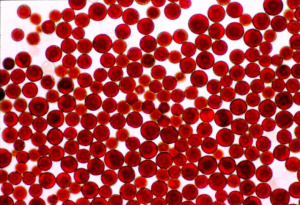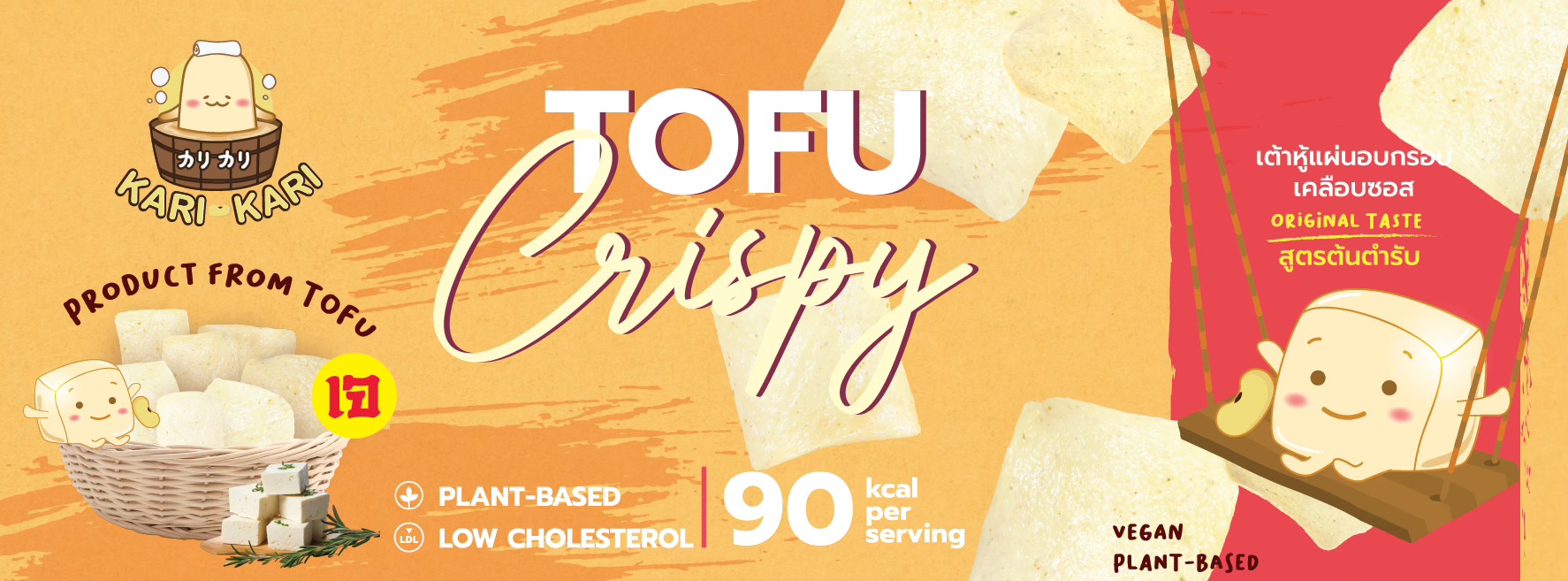รวบรวมงานวิจัยของแอสตาแซนทีนจากทั่วโลก (Astaxanthin Study References)

Cardiovascular
1. Hussein G et al., Antihypertensive and neuroprotective effects of astaxanthin in experimental animals. Biol Pharm Bull. 2005; 28(1):47-52.
2. Hussein G et al., Antihypertensive potential and mechanism of action of astaxanthin II. Vascular reactivity and hemorheology in spontaneously hypertensive rats. Biol Pharm Bull. 2005; 28(6):967-971.
3.Hussein G et al., Antihypertensive potential and mechanism of action of astaxanthin: III. Antioxidant and histopathological effects in spontaneously hypertensive rats. Biol Pharm Bull. 2006; 29(4):684-688.
4.Hussein G et al. Astaxanthin, a carotenoid with potential in human health and nutrition. J Nat Prod. 2006; 69(3):443-449.
5.Li W et al. Alpha-tocopherol and astaxanthin decrease macrophage infiltration, apoptosis and vulnerability in atheroma of hyperlipidaemic rabbits. J Mol Cell Cardiol. 2004; 37(5):969-978.
6.Miyawaki H et al. Effects of astaxanthin on human blood rheology. J Clin Biochem Nutr. 2008; 43 (2):69-74.
7.Yoshida H et al. Administration of natural astaxanthin increases serum HDL-cholesterol and adiponectin in subjects with mild hyperlipidemia. Atherosclerosis. 2010; 209(2):520-3. Epub 2009 Oct 14.
8.Karppi J et al. Effects of astaxanthin supplementation on lipid peroxidation. Int J Vitam Nutr Res. 2007 Jan;77(1):3-11.
9.Kishimoto Y et al. Astaxanthin suppresses scavenger receptor expression and matrix metalloproteinase activity in macrophages. Eur J Nutr. 2010; 49(2):119-26. Epub 2009 Sep 26.
Diabetic Nephropathy
1.Naito Y et al. Prevention of diabetic nephropathy by treatment with astaxanthin in diabetic db/db mice. Biofactors. 2004; 20(1):49-59.
2.Naito Y et al. Microarray profiling of gene expression patterns in glomerular cells of astaxanthin-treated diabetic mice: a nutrigenomic approach. Int J Mol Med. 2006; 18(4):685-695.
3.Uchiyama K et al. Astaxanthin protects beta-cells against glucose toxicity in diabetic db/db mice. Redox Rep. 2002; 7(5):290-293.
4.Kim YJ et al. Protection against oxidative stress, inflammation, and apoptosis of high-glucose-exposed proximal tubular epithelial cells by astaxanthin. J Agric Food Chem. 2009; 57(19):8793-7.
5.Manabe E et al. Astaxanthin protects mesangial cells from hyperglycemia-induced oxidative signaling. J Cell Biochem. 2008; 103(6):1925-1937.
6.Nakano M et al. Inhibitory effect of astaxanthin combined with Flavangenol on oxidative stress biomarkers in streptozotocin-induced diabetic rats. Int J Vitam Nutr Res. 2008; 78(4-5):175-182.
Muscle endurance
1.Aoi W et al. Astaxanthin limits exercise-induced skeletal and cardiac muscle damage in mice. Antioxid Redox Signal. 2003; 5(1):139-144.
2.Ikeuchi M et al. Effects of astaxanthin supplementation on exercise-included fatigue in mice. Biol Pharm Bull. 2006 Oct; 29(10): 2106-10.
3.Malmsten C and Lignell A. Dietary Supplementation with astaxanthin-rich algal meal improves strength endurance –A Double Blind Placebo Controlled Study on Male Students-. Carotenoid Science. 2008; 13:20-22.
4.Sawaki K et al. Sports performance benefits from taking natural astaxanthin characterized by visual acuity and muscle fatigue improvements in humans. Journal of Clinical Therapeutics & Medicines 2002; 18 (9): 1085-1100.
Eye Fatigue
1.Iwasaki T and Tahara A. Effects of astaxanthin on eyestrain induced by accommodative dysfunction. Journal of Eye. 2006; 23(6):829-834.
2.Nagaki Y et al. Effects of astaxanthin on accommodation, critical flicker fusion, and pattern visual evoked potential in visual display terminal workers. Journal of Traditional Medicines. 2002; 19(5):170-173.
3.Nagaki Y et al. The supplementation effect of astaxanthin on accommodation and asthenopia. Journal of Clinical Therapeutics and Medicines. 2006; 22(1):41-54.
4.Nakamura A et al. Changes in visual function following peroral astaxanthin. Japanese Journal of Clinical Ophthalmology. 2004; 58(6):1051-1054.
5.Shiratori K et al. Effect of astaxanthin on accommodation and asthenopia-efficacy–identification study in healthy volunteers. Journal of Clinical Therapeutics and Medicines. 2005; 21(6):637-650.
6.Sawaki K et al. Sports performance benefits from taking natural astaxanthin characterized by visual acuity and muscle fatigue improvements in humans. Journal of Clinical Therapeutics & Medicines 2002; 18(9):1085-1100.
7.Nitta T et al. Effects of astaxanthin on accommodation and asthenopia-dose finding study in healthy volunteers. Journal of Clinical Therapeutics and Medicines. 2005; 21(5):543-556.
8.Takahashi N and Kajita M. Effects of astaxanthin on accommodative recovery. Journal of Clinical Therapeutics and Medicines. 2005; 21(4):431-436.
9.Kajita M et al. The effects of a dietary supplement containing astaxanthin on the accommodation function of the eye in middle-aged and older people. Journal of Medical Consultation & New Remedies. 2009; 46(3):89-93.
Gastric
1.Bennedsen M et al. Treatment of H. pylori infected mice with antioxidant astaxanthin reduces gastric inflammation, bacterial load and modulates cytokine release by splenocytes. Immunology Letters 2000; 70(3):185-189.
2.Kupcinskas L et al. Efficacy of the natural antioxidant astaxanthin in the treatment of functional dyspepsia in patients with or without Helicobacter pylori infection: A prospective, randomized, double blind, and placebo-controlled study. Phytomedicine. 2008; 15(6-7): 391-399. Epub 2008 May 7.
3.Lignell A et al. The safety, tolerability and efficacy of the antioxidant Astaxanthin in the treatment of Helicobacter pylori infection. 12th International Carotenoid Symposium, Cairns. 1999. (See also AstaReal AB: Report by T.J.Brody, 07.99)
4.Wang X et al. Astaxanthin-rich algal meal and vitamin C inhibit Helicobacter pylori infection in BALB/cA mice. Antimicrobial Agents and Chemotherapy. 2000; 44(9):2452-2457.
Skin
1.Seki et al., 2001. Effects of astaxanthin fromf Haematococcus pluvialis on human skin. Fragrance Journal 12:98-103
2.Yamashita, E. Cosmetic benefit of dietary supplements including astaxanthin and tocotrienol on human skin. 2002, FOOD Style 21, 6:(6) 112-117.
3.Yamashita, E. Effect of a Dietary Supplement Containing Astaxanthin on Skin Condition. Carotenoid Science 2006. Vol. 10: 91-95.
Lipid Metabolism (BMI)
1.Aoi et al. Astaxanthin improves muscle lipid metabolism in exercise via inhibitory effect of oxidative CPT I modification. Biochemical & Biophysical Research Communications 36:892-897.
2.Ikeuchi M et al. Effects of astaxanthin supplementation on exercise-included fatigue in mice. Biol Pharm Bull. 2006 Oct; 29(10): 2106-10.
3.Fukamauchi M. Food functionality of astaxanthin-10: Synergistic effects of astaxanthin-10 intake and aerobic exercise. Food Style 21. 2007; 11.
Anti-Inflammation
1.Bennedsen M et al. Treatment of H. pylori infected mice with antioxidant astaxanthin reduces gastric inflammation, bacterial load and modulates cytokine release by splenocytes. Immunology Letters 1999; 70(3):185-189.
2.Wang X et al. Astaxanthin rich algal meal and vitamin C inhibit H.pyori infection in BALB/cA mice. Antimicrobial Agents and Chemotherapy 2000; 44(9):2452- 2457.
Anti-Inflammation - Others
1.Lee SJ et al. Astaxanthin inhibits nitric oxide production and inflammatory gene expression by suppressing lkB kinase-dependent NF-kB activation. Mol Cells. 2003; 16(1):97-105.
2.Ohgami K et al. Effects of astaxanthin on lipopolysaccharide-induced inflammation in vitro and in vivo. Invest Ophthalmol Vis Sci. 2003; 44(6):2694–2701.
3.Suzuki Y et al. Suppressive effects of astaxanthin against rat endotoxin-induced uveitis by inhibiting the NF-kB signaling pathway. Exp Eye Res. 2006; 82(2):275-281. Epub 2005 Aug 26.
Antioxidant
1.Miki W. Biological functions and activities of animal carotenoids. Pure and Appl Chem. 1991; 63: 141-6.
2.Nishida Y et al. Quenching Activities of Common Hydrophilic and Lipophilic Antioxidants against Singlet Oxygen Using Chemiluminescence Detection System. Carotenoid Science. 2007; 11:16-20.
3.Nishigaki I, Dmitrovskii A, Miki W, and Yagi K. Suppressive effect of astaxanthin on lipid peroxidation induced rats. J Clin Biochem Nutr. 1994; 16:161-6.
4.Shimidzu N, Goto M, and Miki W. Carotenoids as singlet oxygen quenchers in marine organisms. Fisheries Science. 1996; 62:134-7.
5.McNulty HP et al. Differential effects of carotenoids on lipid peroxidation due to membrane interactions: X-ray diffraction analysis. Biochim Biophys Acta. 2007; 1768(1):167-174.
6.Goto S et al. Efficient radical trapping at the surface and inside the phospholipid membrane is responsible for highly potent antiperoxidative activity of the carotenoid astaxanthin. Biochim Biophys Acta. 2001; 1512(2):251-258.
7.Hashimoto H et al. Effect of astaxanthin consumption on superoxide scavenging activity in aqueous humor. Translated from Atarashii Ganka (Journal of the Eye). 2009; 26(2):229-234.
8.Tominaga K et al. Protective effects of astaxanthin against singlet oxygen induced damage in human dermal fibroblasts in-vitro. Food Style 21. 2009; 13:84-86.
Stress
1.Iwabayashi M et al. Efficacy and safety of eight-week treatment with astaxanthin in individuals screened for increased oxidative stress burden. Anti-Aging Medicine. 2009; 6(4):15-21.
References : Fuji Health Sciences
 SIRIPEE สิริพีย์
SIRIPEE สิริพีย์





